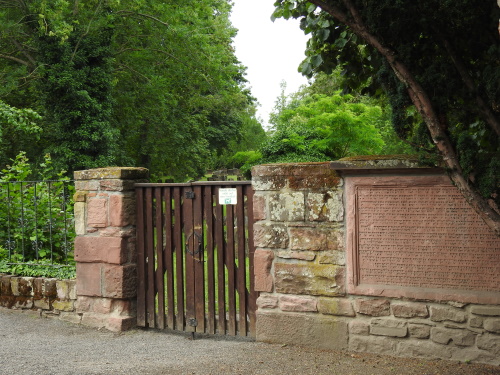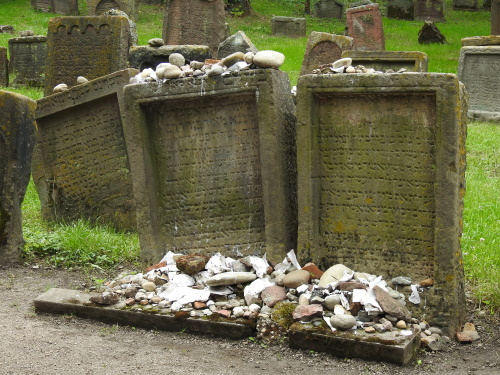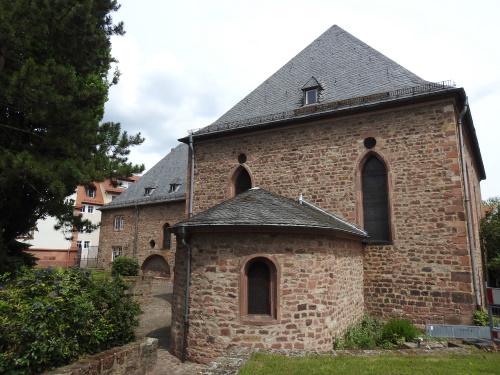Blog TWHS Visits
ShUM city of Worms
The ShUM cities of Speyer, Worms and Mainz will probably be up for nomination in 2021 – I write “probably” as we have no idea how the schedule of new nominations will be after the postponement of this year’s WHC session. When I visited Worms last Friday the city seemed to be more preoccupied with the 500th anniversary of Luther’s appearance at the Diet of Worms than with the upcoming World Heritage (Worms has a UNESCO Memory of the World listing for Luther already). I of course focused on the 2 locations included in this TWHS: the former Synagogue Compound in the Jewish quarter and Old Jewish 'Heiliger Sand' Cemetery of Worms.
Every Friday at 11 am there is a guided tour of the Heiliger Sand cemetery. I aimed my arrival in Worms to be in time to participate, which meant that I left my home already at 5 am! An 8 EUR ticket has to be bought beforehand at the Tourist Information in the city center, the tour starts at the entrance of the cemetery just outside it. Upon buying my ticket I was told that the tour would start half an hour later today. I arrived around 11.15 and noticed rightaway an official looking group with people in neat clothes including one or two who could pass for specialists on Jewish heritage. My guide later on confirmed my first impression: these were UNESCO / ICOMOS members and specialists on a site visit related to the appraisal of the WH nomination.
For my tour 13 people showed up (15 is the maximum). The tour is conducted in German only. The guide managed to fill almost 2 hours – it was her first tour post-Covid and maybe she got a bit carried away. The cemetery certainly isn’t large and half an hour would be enough when you’re on your own. But I was glad that I joined the tour as lots of little details were pointed out. The cemetery lies outside the medieval city walls of Worms and within its own enclosed area (it is locked during the night, but I noticed no other obvious security measures). A lot of new research on it has been done to strengthen the world heritage nomination dossier (available here).
The cemetery is located at the site of a former quarry. The lower part near the entrance has the oldest tombstones. They all have long inscriptions in ancient Hebrew. The 2 most famous stones date from the late 13th century and are those of the Maharam of Rothenburg and Alexander ben Salomon Wimpfen. The first was a Rabbi who was captured by the German king while fleeing from his tax regime. Alexander eventually paid up to have the rabbi’s remains released, on the premise that he himself would be buried beside him. Visitors now leave pebbles on their stones as a memorial.
Higher up lie the dead of later centuries. The Jews in Worms at that time were more assimilated into the German mainstream. The texts on the grave stones were written in German instead of Hebrew, the Christian calendar was used to display the year of death instead of the Hebrew one. The shape of the headstones became more similar to Christian gravestones as well. But still here are a few interesting grave traditions to see, such as the use of a broken column to represent a young man's life cut short.
At the other end of the Worms city center lies the former Jewish quarter, centered around the Judengasse. Here the synagogue complex can be found – with the male and female sections, the ritual bath (now closed for renovation) and the small Jewish museum. It all felt a bit over-restored and clinical. The museum display especially seemed to showcase a far and distant culture instead of a once flourishing local community and the neighbours of the grandparents of today's citizens of Worms.
So what’s the verdict on this TWHS? I am “sitting on the fence” on this one. The historical value of the 3 ShUM cities in the Jewish diaspora is undoubted. However there are very few original tangible remains left and what bothered me the most is that it is a dead culture, fully cut short in the 1930s. The cemetery being advocated in the nomination dossier as a pilgrimage site “for Jews from all over the world” may be a stretch – it’s not that droves of Jews visit the site on special days or so. The City of Worms, volunteers and donators should be praised for rebuilding and taking good care of these monuments, but its Jewish soul left already long time ago.
Els - 21 June 2020
Comments
Durian 21 June 2020
Interesting !!! they already started to evaluate the site even before WHC officially approved the nominated sites list of 2021. With open border in Europe this could be done, but for other region, it would be totally difficult to get international experts to travel. But with today technology, physical visit maybe not necessary anymore, they can ask local experts to dig information for them.


